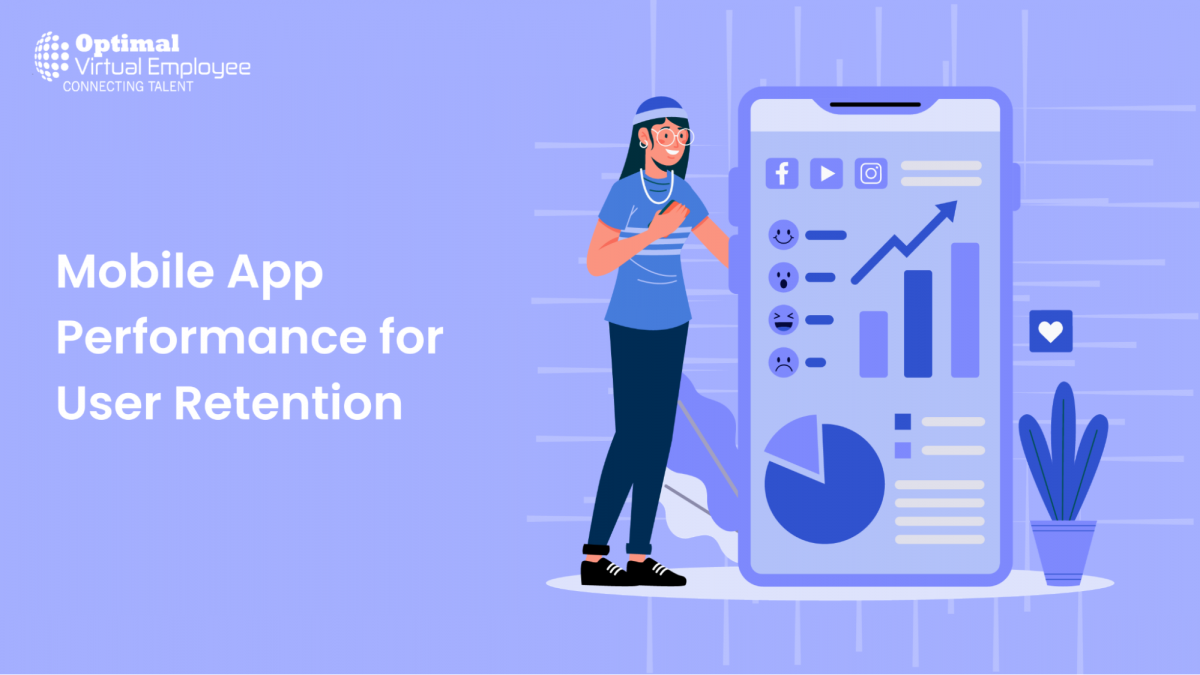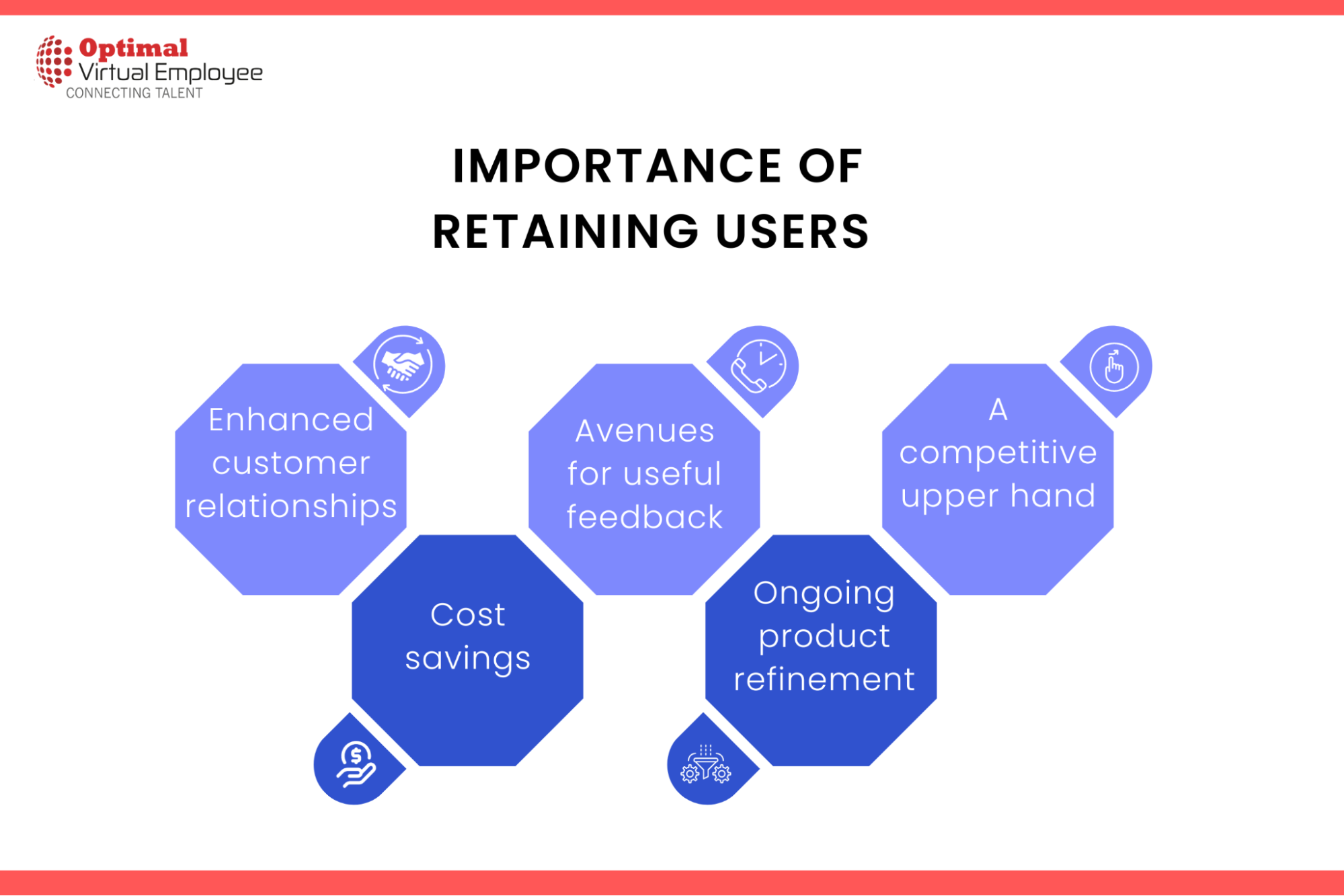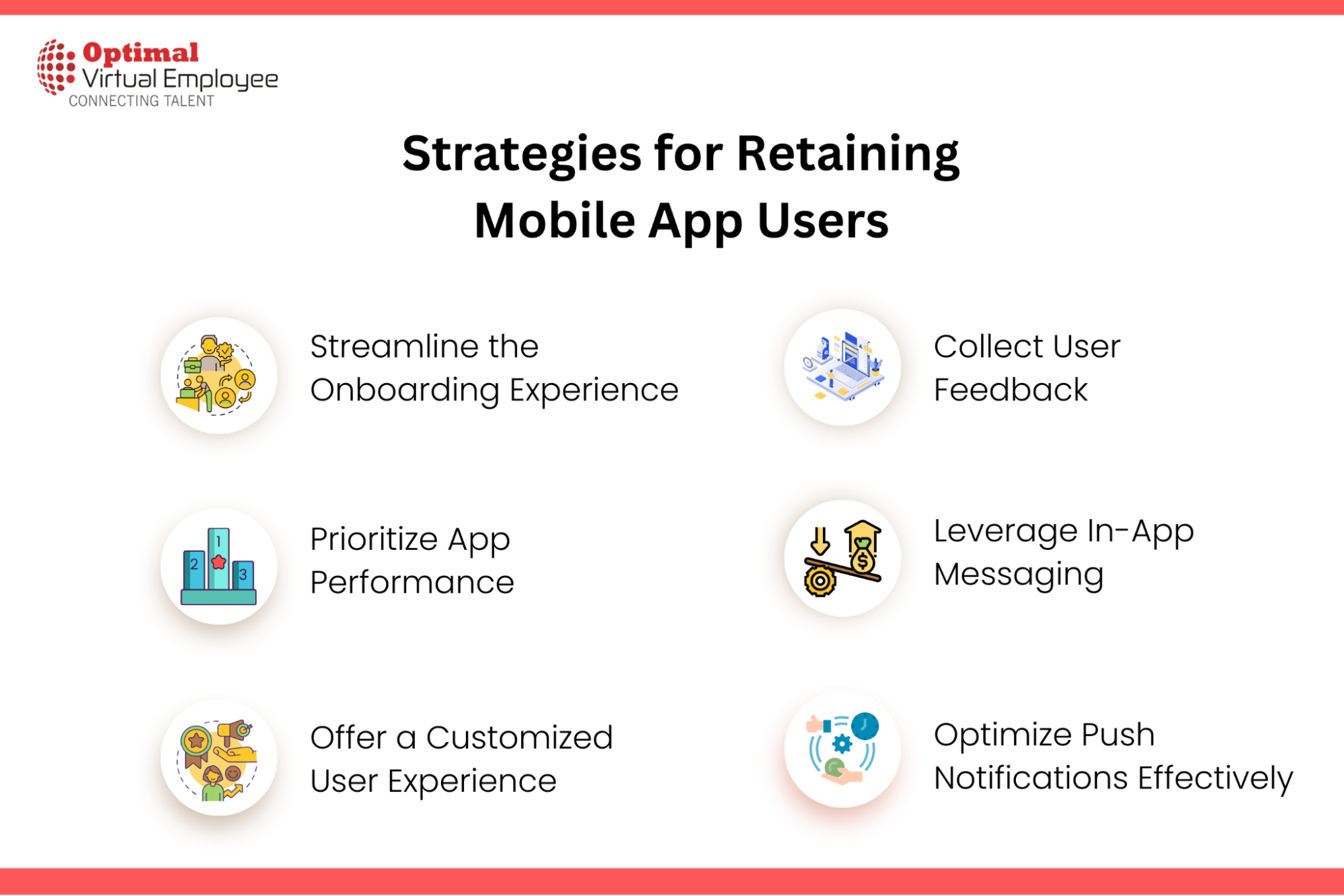After months of meticulous planning, design, and development, you’ve successfully launched your dream app. Kudos to you!
However, the journey doesn’t end here. One significant hurdle you may encounter is a low retention rate. This suggests that your target users download the app, use it briefly, and then neglect it altogether.
It’s understandably frustrating. After all, what’s the point of having an app that no one engages with? If you find that your retention strategies are failing and users are continuously exiting your app, it’s time to take immediate action.
What Does User Retention Mean?
User retention is the measure of how effectively a business can maintain an active and engaged user base over a given time frame. It’s not just about getting users in the door; it’s about consistently providing value that adapts to their evolving needs and preferences. A successful user retention strategy involves more than just a high-quality product; it also hinges on building an emotional rapport with users.
Why is Retaining Users So Crucial?
From a business standpoint, the importance of user retention can’t be overstated. It’s usually more cost-efficient to keep existing users engaged than it is to continually attract new ones. A devoted user community not only contributes to recurring revenue but also helps in gaining valuable referrals and serving as brand champions in a fiercely competitive landscape. By prioritizing user retention, you lay the foundation for long-term growth, sustainability, and a distinct edge in the marketplace.
Additionally, focusing on user retention yields:
– Enhanced customer relationships
– Cost savings
– Avenues for useful feedback
– Ongoing product refinement
– A competitive upper hand
Strategies for Retaining Mobile App Users
The key to your mobile app’s success lies in user engagement. To make your app as captivating as possible, consider implementing these 12 time-tested user retention strategies for better engagement metrics.
Streamline the Onboarding Experience
First impressions are crucial, especially for mobile apps. Your onboarding process should be straightforward and intuitive to hold the user’s attention. According to Appsee, you have just 20 seconds to captivate users before they abandon your app.
Research from Localytics has shown that an effective onboarding process can enhance retention rates by over 50%. So, what constitutes a smooth onboarding experience? Here are some best practices to consider:
Focus on Key Features: Clearly communicate the primary functionalities of your app so users know what to expect.
Avoid Unnecessary Questions: Only ask for information that’s essential for the app’s function to avoid overwhelming users.
Simplify the Sign-Up Process: Offer multiple registration options, like social media accounts, to make the sign-up procedure more convenient.
Skip the Obvious: Over-explaining elements like navigation or icons can prolong the onboarding process, so only include what’s essential.
Prioritize App Performance
Optimizing your app’s performance is essential for increasing customer retention. In today’s fast-paced world, users have little patience for slow or glitchy apps. Fair warning: If your app suffers from frequent crashes or slow loading times, users are likely to abandon it in favor of a more reliable alternative. Nothing turns users away faster than an app that fails to perform as expected.
To guarantee top-notch app performance, your primary goals should be to minimize crashes, improve gesture recognition accuracy, and speed up loading times. However, these are just the starting points. The list of potential technical issues can be quite long, so it’s important to consistently monitor your app’s overall performance. Should you encounter any bugs or errors, address them immediately to maintain user engagement.
Offer a Customized User Experience
Feeling valued is important, whether in daily life or while interacting with a mobile app. By customizing your app’s content, you can cultivate a loyal user base that appreciates your personalized approach. Despite its importance, many apps still miss the mark on delivering a tailored experience. That’s your chance to distinguish yourself and win users over.
So, how do you go about it? Leverage the data you have—it’s one of your most valuable assets for understanding your users better.
What kind of data should you gather for user profiling? You can collect a wide range of information including location, interests, age, gender, app usage frequency, behavior, conversion history, and more. The more comprehensive the data, the more personalized your app can be.
There are two categories of personalization to consider:
Static Personalization: These are constant factors like including the user’s name in push notifications.
Dynamic Personalization: These factors change over time and can include behavior and conversion history.
For a stellar example of personalization done right, look no further than Spotify. Their team expertly leverages personal data to craft customized playlists, creating a win-win situation: Spotify gains more loyal users, while music enthusiasts enjoy a superior listening experience.
Collect User Feedback
To maintain consistent user engagement, it’s crucial to pay attention to what your users have to say. One effective way to collect their feedback is by sending out surveys, asking about their experience with your app or whether they’d recommend it to a friend.
Reviews and ratings on app stores are another rich source of user opinions. These are insights that people willingly provide, and they can offer a true picture of what users think about your app. Chances are, you look at these ratings and reviews yourself before downloading an app, so it’s a good idea to closely monitor what users are saying about your app on platforms like Google Play and the iOS App Store.
Constructive criticism is equally important. If users point out issues they’re encountering with your app, view it as an opportunity for growth. This kind of feedback allows you to identify problem areas, providing valuable input for improvements and future updates.
Leverage In-App Messaging
Curious about what in-app messages are? To clarify, in-app messages are targeted notifications that users receive while they’re actively using a mobile or desktop application.
There are various types of in-app messages you can utilize:
AI Chatbot Solutions: These are pop-up windows featuring personalized messages, usually aimed at assisting and welcoming new or returning users.
Product Tours: Commonly found in desktop applications, these guide users through the key features in a step-by-step manner.
Mobile Carousels: These full-screen notifications help onboard new users by briefly outlining the app’s features or showcasing promotions.
Statistics show that users are generally willing to engage with in-app messages. According to Airship, they are among the most effective channels for messaging, boasting an average engagement rate of 44% for high-performing apps and 26% for medium-performing apps.
In-app messaging allows you to send targeted messages to the right users at the opportune moment, based on their personal data and past activities. Therefore, it’s safe to say that in-app messaging stands as one of the most potent strategies for retaining users.
Optimize Push Notifications Effectively
Push notifications can be a highly effective way to capture user attention and encourage repeat visits to your app—but only if executed properly. Why emphasize this? Because intrusive notifications will definitely not engage users. In fact, they can lead to user annoyance and prompt them to uninstall your app.
To maximize the impact of push notifications, adhere to these guidelines:
Tailor the Messages: Personalization cannot be overstated. No one likes receiving generic notifications.
Strive for Moderation: Avoid bombarding users with an excessive number of notifications.
Get the Timing Right: Choose the most appropriate time to send your messages, taking into account user behavior and the context of your notification.
Include a Call to Action (CTA): Guide users on what to do next.
Netflix serves as an excellent example when it comes to push notifications. It doesn’t flood you with irrelevant messages; rather, it reminds you about shows and movies that you’re likely interested in watching. That’s precisely how you should leverage push notifications to bolster user retention.
Design an Eye-Catching User Interface
Did you know that 94% of first impressions are influenced by design elements? This reveals a simple truth: users do judge your mobile app based on its appearance. Therefore, allocating time and resources to develop an aesthetically pleasing user interface (UI) is vital. Not only can a visually stunning UI capture users’ attention, but it can also keep them engaged for extended periods.
For design inspiration for your mobile app, check out our design board!
Prioritize App Store Optimization (ASO)
In a market crowded with millions of apps, differentiation is crucial. App Store Optimization (ASO) boosts your app’s visibility in search rankings, making it more discoverable for potential users. But the benefits of ASO go beyond merely increasing your user base; it also helps attract users who are genuinely interested in what your app has to offer.
By fine-tuning your app’s metadata and descriptions, you can target an audience that resonates with your app’s value proposition, thus increasing the likelihood of higher retention rates.
Conclusion
User engagement serves as the pivotal element that dictates your app’s success or failure. So, how can you ensure long-term user retention?
Understand Your Target Audience and Offer Genuine Value: Make sure your app addresses users’ specific challenges and meets their needs, encouraging them to return regularly.
Employ Personalization for Increased Loyalty: Tailoring the user experience can result in a more loyal user base that not only keeps coming back to your app but also recommends it to others.
Set and Monitor Key Performance Indicators: From the get-go, establish KPIs and keep an eye on important metrics such as Customer Lifetime Value, Loyal Customer Rate, and Customer Churn. By doing so, you’ll gain insights into areas that require improvement.











